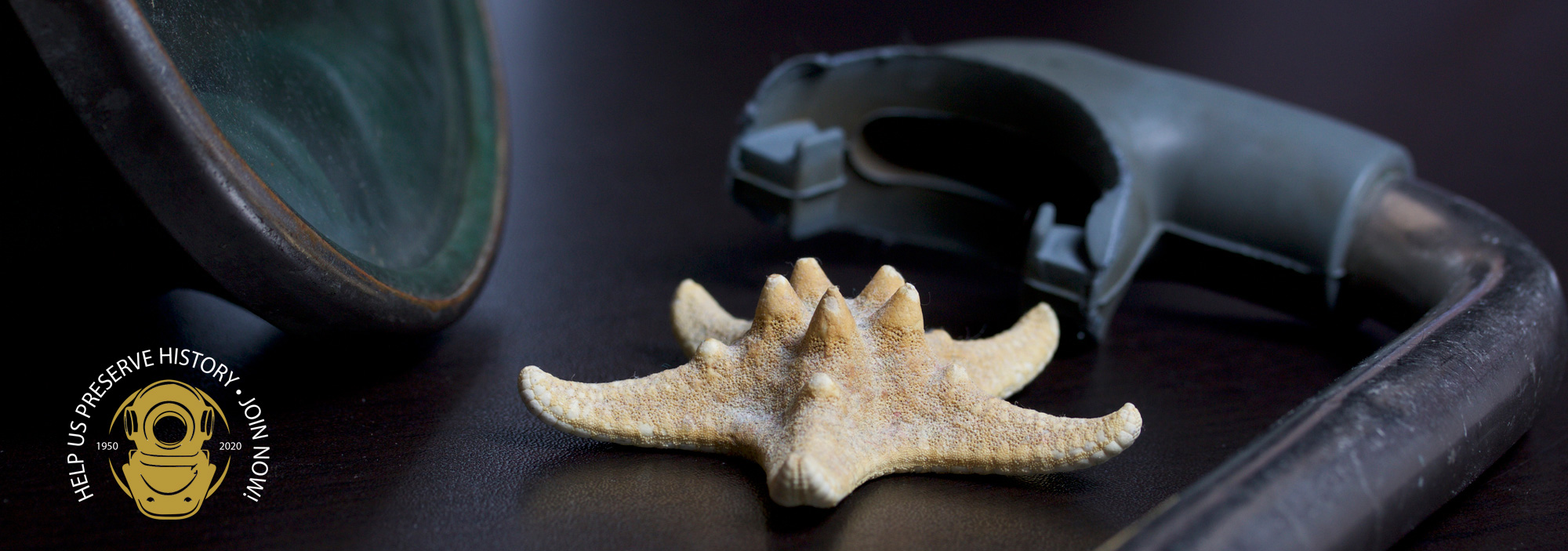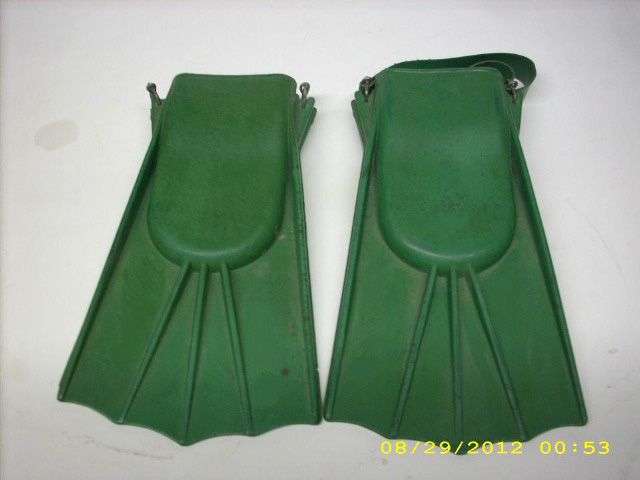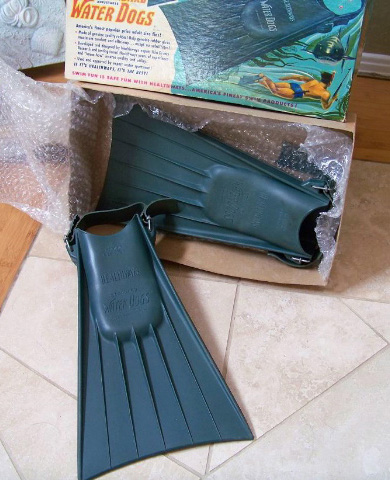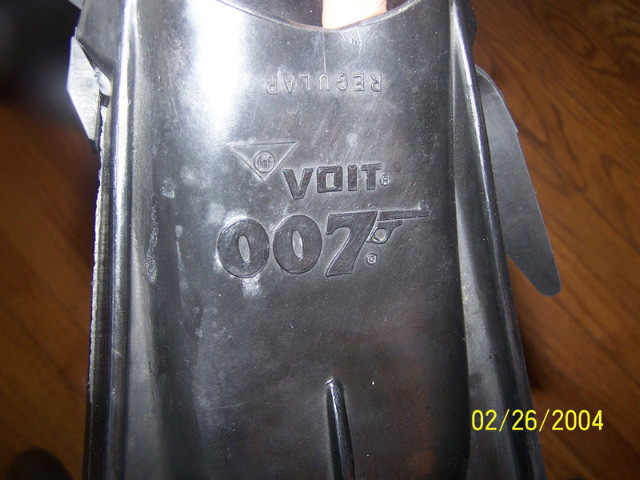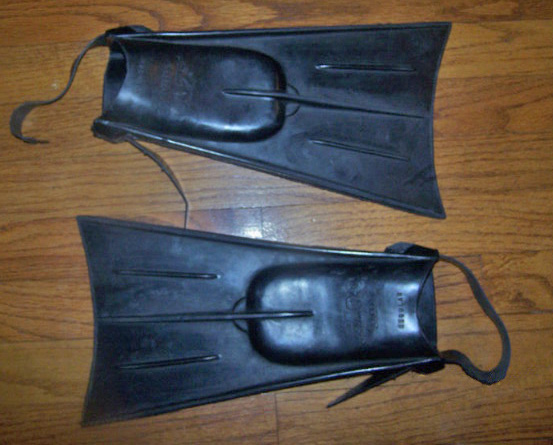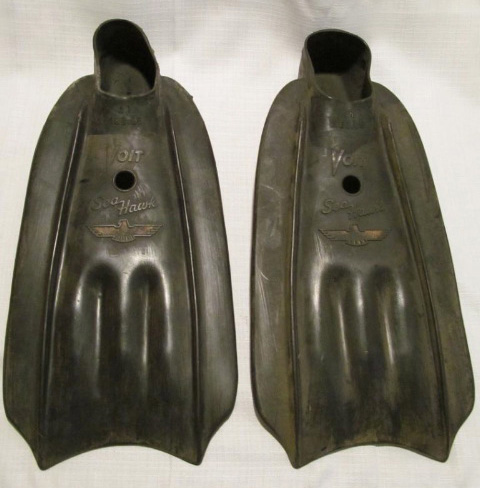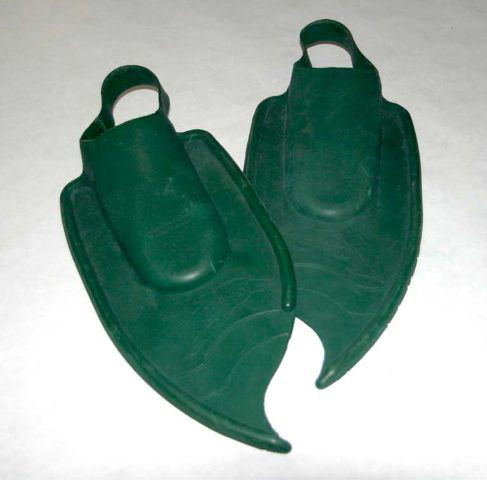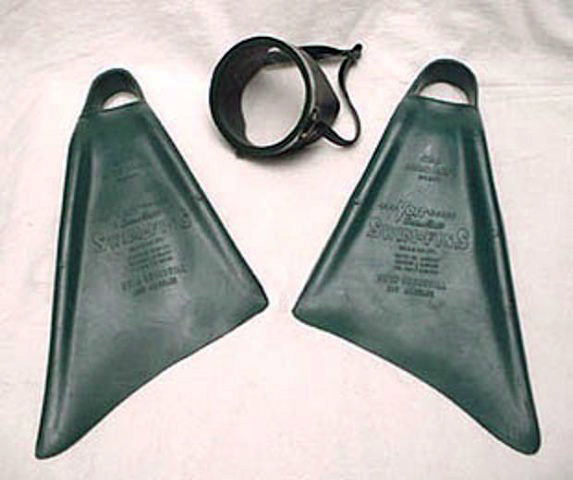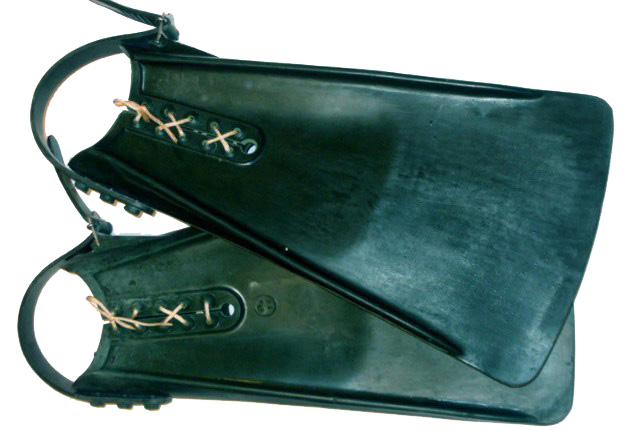Navy Underwater Demolitions Teams “UDT” Fins – Circa post WWII throughout the 50’s-early 60’s
During the inception of the U.S. Naval underwater warfare units, Strong swimmer, Frogmen, OSS-UDT and finally SEALs teams, the earliest days utilized Churchill style fins but shortly after WWII the Navy began looking for a more military grade “hardier-use” fin to stand up to the rigors of battlefield demands. The UDT fin filled that demand and became a battle tested piece of Mil-Spec Navy issued field gear. By the time the Viet-Nam conflict began in the early 60’s the Navy had adopted variations of the popular black, or military brown Rocket and Jetfin designs, which remain in use today.
Healthways “Web-Feet” Fins – Circa early to mid 50’s
Yet another version of Healthways fin designs, very similar to the Waterdog style fin, the Web Feet were slightly softer and were perhaps more comfortable because of the pliable kick effect, however they would offer less power and were probably more effective and popular as a snorkeling or skin-diving fin.
Healthways Waterdog Fins
The waterdog fins were a departure from some of the earliest fin types when the shape began to take on the more typical “fan-blade” style, and finally offered an adjustable style heel strap rather than the fixed size style making the fin more desirable to a broader number of foot sizes. The pair of waterdogs on display here are new condition in the original 1954 packaging.
Voit James Bond 007 Fin
In 1965 Voit was commissioned to supply all of the dive equipment for the James Bond “Thunderball” feature film. The now classic movie highlighted modern day scuba equipment in a way it had never been done before. Underwater battle scenes with virtual underwater armies of divers engaged in watery spear gun warfare, along with underwater vehicles and a brand new single hose regulator worn by James Bond (Sean Connery), while everyone else was stuck using double hose units. It is unclear as to whether the fins were actually used in the making of the film, or simply a marketing maneuver attempting to capitalize on the rage over anything “James Bond” at the time.
Voit “Sea-Hawk” Fin – Circa 1960
A unique fin style, the Sea-Hawk was another design experiment of the times. Featuring a foot pocket style, with the blades extending up into mid-length of the foot pocket on either side thus widening and creating more blade surface. The Sea-hawk fin was only marketed in the Voit dive equipment catalogue one year in 1960.
Healthways “Webby’s Fins – Circa-early 50’s
Webby’s are some of the most unusually designed fins there are. Harkening back to the very beginnings of skin and scuba diving, nearly all design concepts were worth testing as everything was virtually brand new within the infancy of the dive industry. By the early 50’s nearly everything fin-wise had shifted to the more standard fan-blade style commonly used in the majority of fins manufactured now.
Owen Churchill Fin
The Churchill fin was the first commercially manufactured diving fin. Conceived and developed around 1937, the design was applied for U.S. patent in 1940 and was granted patent in 1943. In the early 50’s Voit-Swimaster began marketing the Churchill fin design via licensing agreement, both entities had their brand name embossed in relief on the fins as a result.
Only minor changes have been made to the original design since its inception, mainly in synthetic rubber compounds used in its modern manufacture. Oddly, the Churchill fin style regained popularity in the early 80’s as a boogie board and sky diving accessory due to its relatively short, yet effective blade design, and remains a staple in those sports today.

